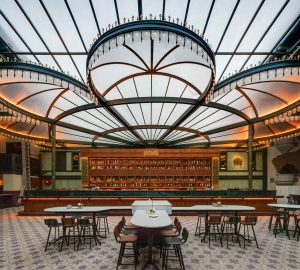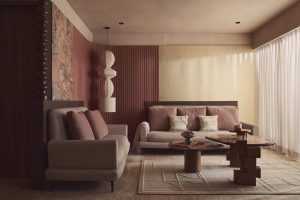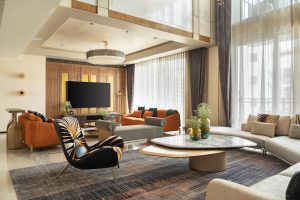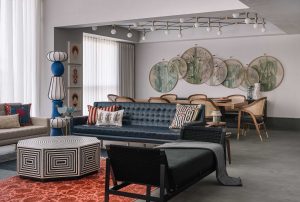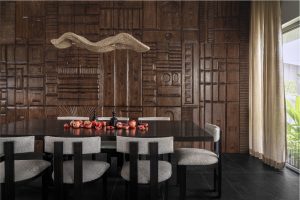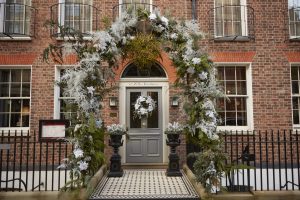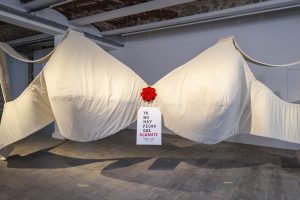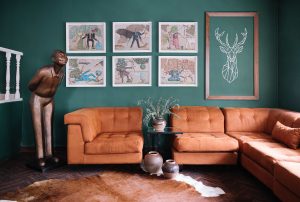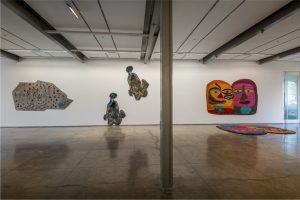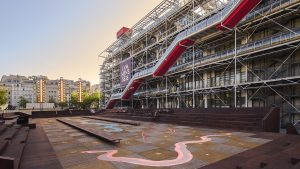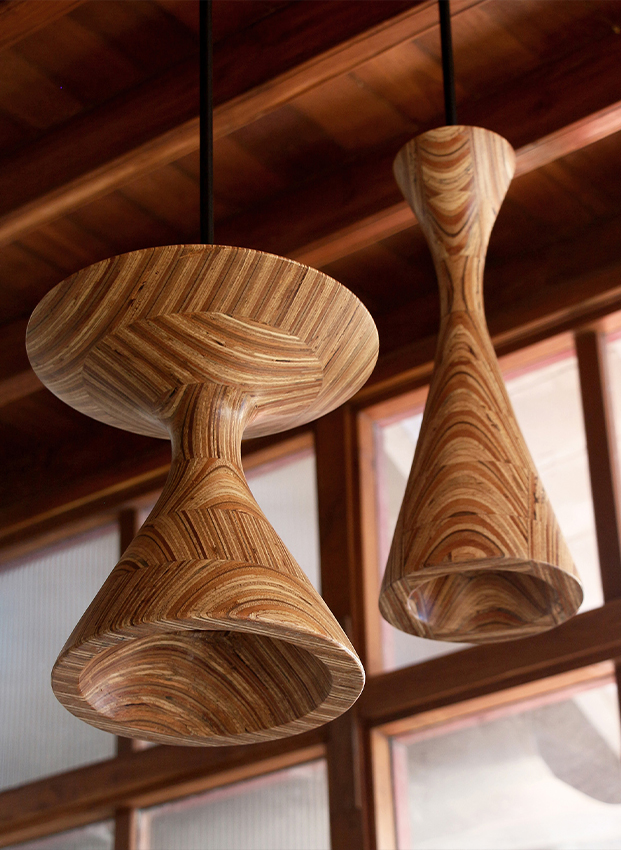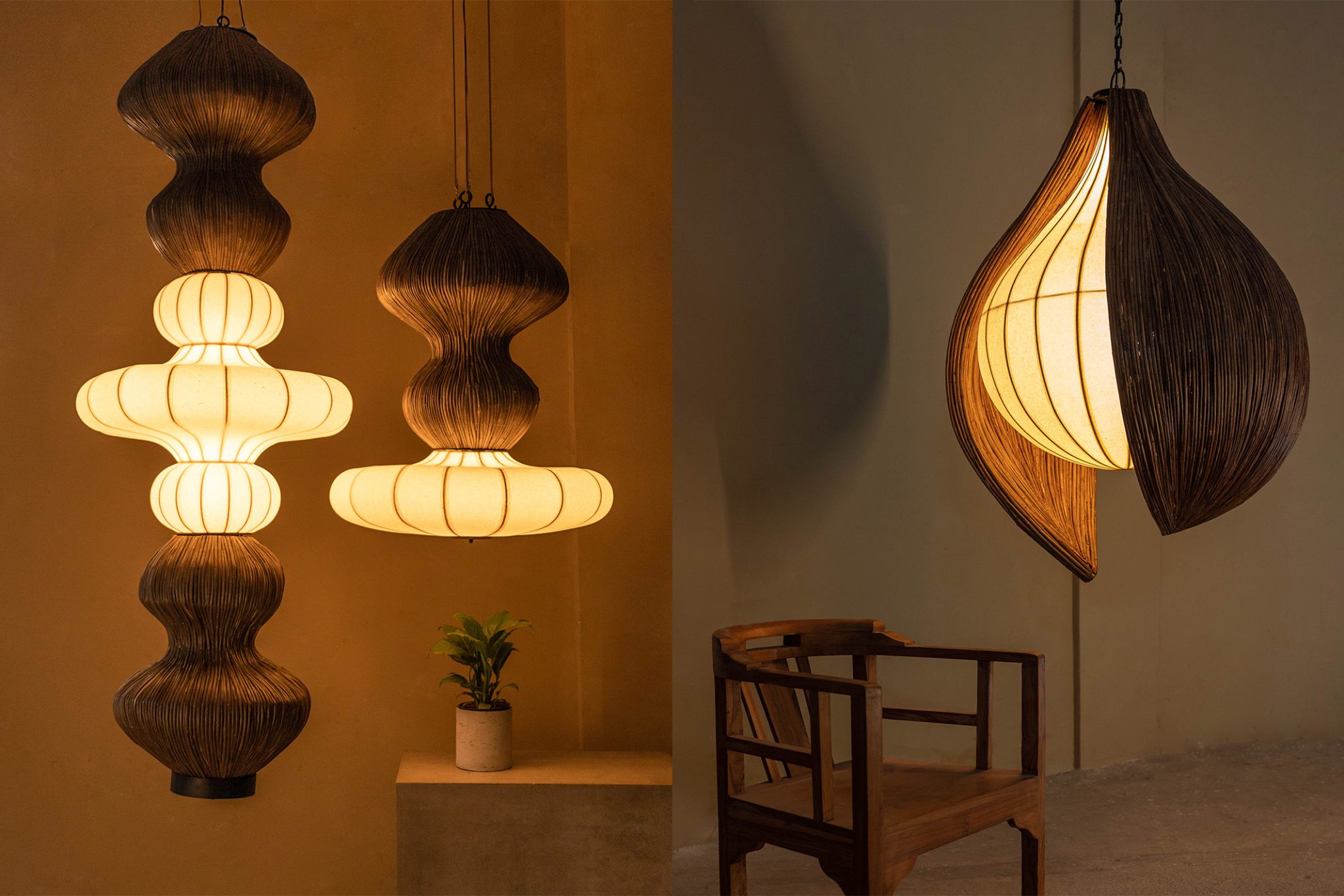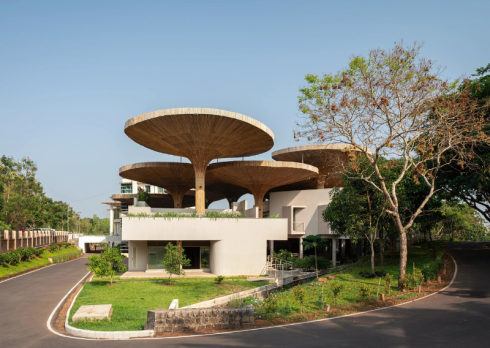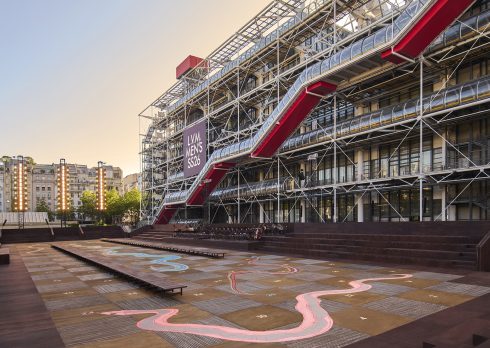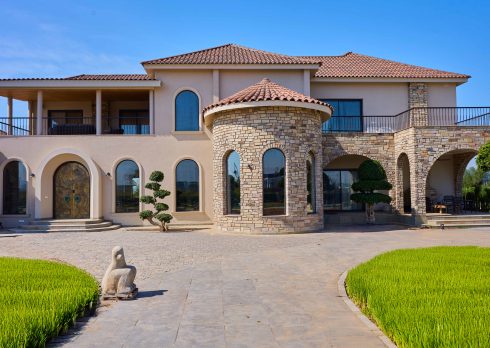This Restored Gujarat Home Lets You Walk, Lounge, And Stargaze On The Roof
Conceived by MuseLAB, a restored summer sanctuary on the outskirts of Gujarat pairs earthy textures and an open layout, topped with a roof that one can walk on.
- 26 Aug '25
- 1:13 pm by Simran Almeida
The chronicles of very few homes begin with ruins. It requires a practised eye to see beauty in decay and a vision to envisage a serene sanctuary on such a site. Thus began the tale of this abode in the hands of Huzefa Rangwala and Jasem Pirani of MuseLab. On the outskirts of Gujarat, the duo recalls, “What we found was a serene piece of land and a shambled old cottage—submerged in decay, with its foundation failing, slowly surrendering to the earth.” Amidst this bucolic hinterland of Khattalwada, Rangwala and Pirani nursed a once-forlorn abode back to life, reverently venerating its past while embracing the sublime imperfections.
Nestled off a highway, the home was fittingly monikered ‘Three Palm Trees,’ a nod to the site’s untamed greens that render it an idyllic sanctuary for weekend repose. This name borrows from the site’s perpetual verdure—a triad of towering palms that serve as enduring emblems of its storied past. “The surroundings are not just a backdrop but a living presence, bathing interiors in dappled light and natural hush, where nature is in dialogue with design,” the designers explain. The trio of palm trees drafts a referential axis across the site, allowing the home to take shape while being profoundly attuned to its topography. Consequently, the endeavour became one of rekindling it to its erstwhile glory, while answering the aspirations of those who call it home. “Rather than erase its past, we chose to rescue the site’s soul, weaving new structure around the existing palms, restoring narrative, light, and space while honouring what nature had nearly reclaimed,” they share.
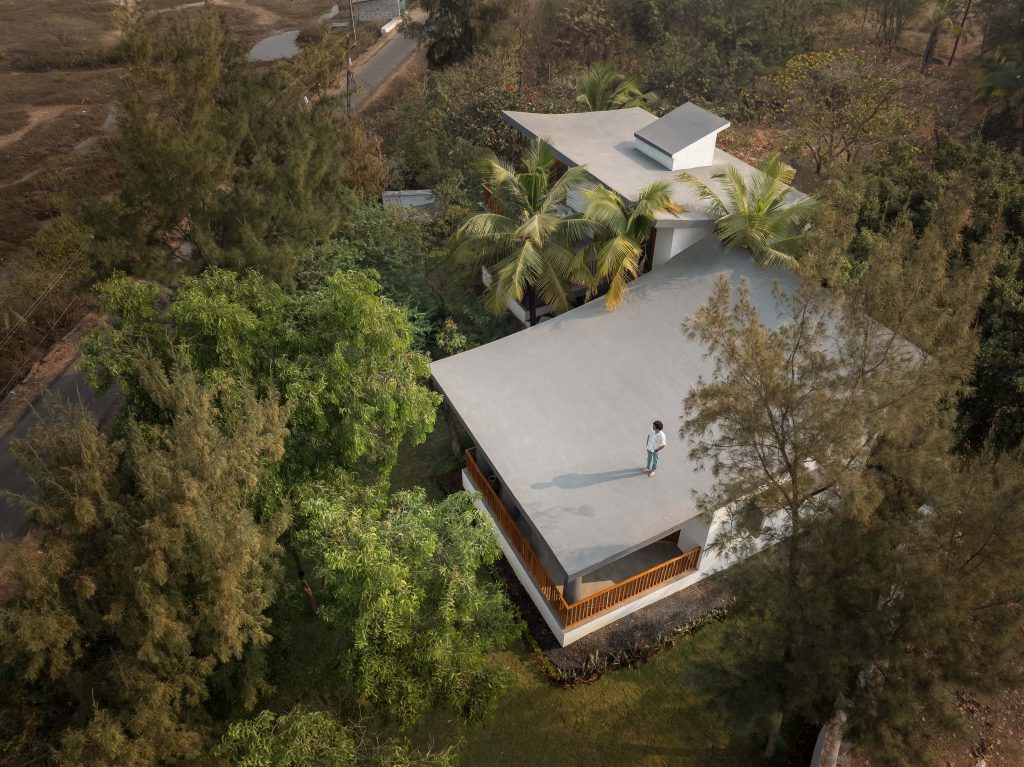
Spaces For Slow Living
Conceived for a young Parsi family from Bombay, “the idea was simple yet powerful: create a weekend retreat that translates slow-paced rhythms into spatial experience,” the designers share. They add, “With 3 Palm Trees, we wanted to bottle summer haze.” Conjuring a wistful nostalgia reminiscent of the languor of Indian summers, the designers orchestrated two rectilinear volumes. This duo of volumes was meticulously embellished with expansive verandahs, alfresco decks, and a walkable roof, all while dissolving the boundaries between built form and Khattalwada’s natural landscape. “One (block) houses living, dining, and kitchen areas, spacious and sunlit—with deep wood-clad bay windows and clerestory,” explain the designers. They add, “The other block, dedicated to bedrooms, feels more private, its windows framing leaf-strewn views, filtered light casting soft, steady shadows throughout.”
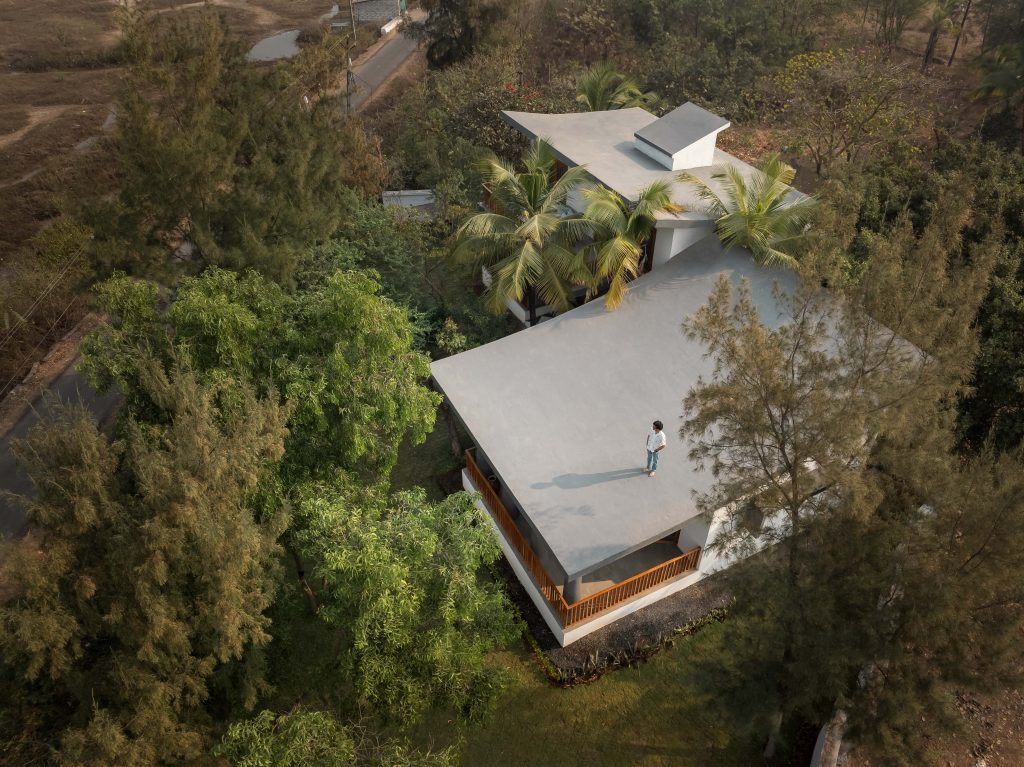
But before it became a symbol of nostalgia, it stood as a forsaken relic, its bones claimed by the slow, unyielding process of time. The designers corroborate, “Ironically, our first encounter with the residence was far from whimsical.” In that moment, the designers understood that shaping this defunct structure into a home that might one day host languid weekend picnics would be a challenge. However, they say, “We tackled it head-on, demolishing unsafe parts, rebuilding with solid cuboid volumes, and stitching them back around the palms.” The result was a symphony of intersecting roofs, sheer walls, and two cuboidal blocks, where each element is in deliberate dialogue while offering sweeping views of the pastoral landscape.
Also Read: This 19,000 Sq Ft New Delhi Farmhouse Serves Up Scale, Colour, And Bold Design
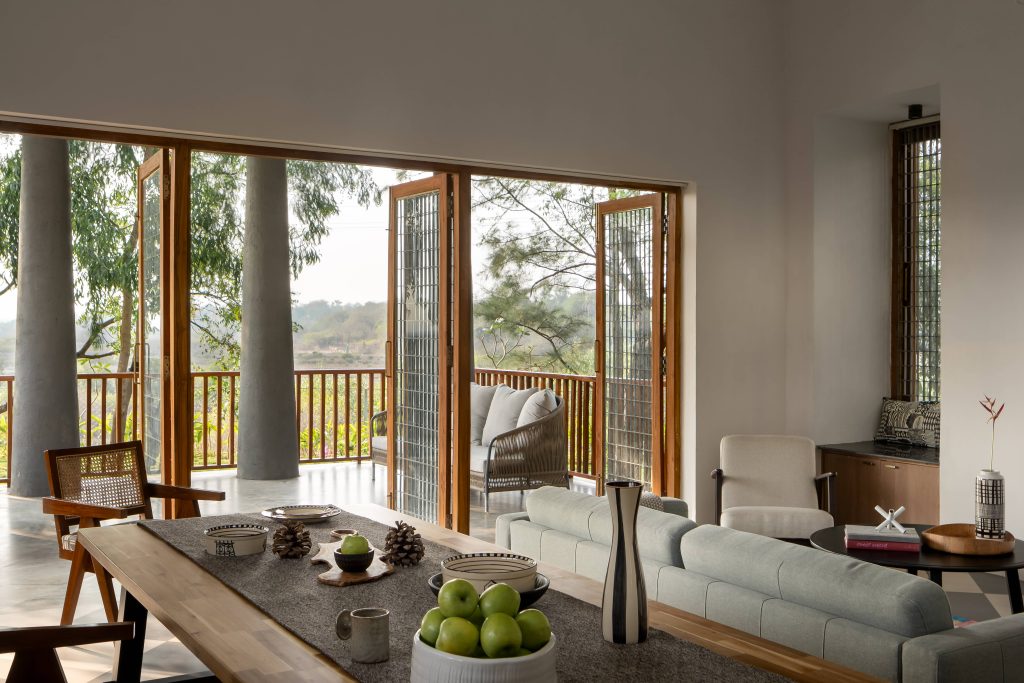
A Summer Sanctuary
Akin to the game of hopscotch, the entry to the home unveils itself through a chequered-patterned breezeway, orchestrating an interplay of light and shadow courtesy of two palm trees. These lofty trees ceremoniously anchor one’s arrival, standing like stoic custodians, guarding all who pass through. “To either side of this calm corridor stand two cuboid volumes with quiet clarity,” the designers explain. On one side, this meandering, scenic route culminates in a verandah—a quintessential architectural feature of the region, fondly referred to as an ‘otla,’ born of the warm, tropical climate. Framed with locally sourced timber railing, the verandah gazes out over vast fields beyond, where one might sink into a chair with a well-worn book on a summer afternoon.
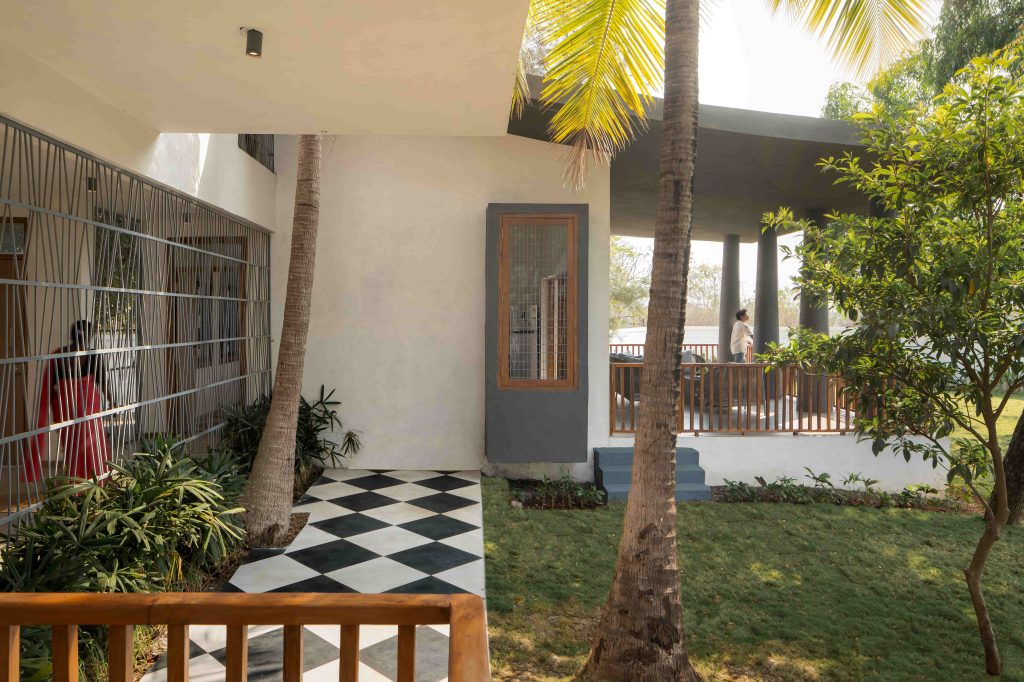
To dissolve the boundaries between outdoors and indoors, a bespoke floor-to-ceiling wooden-framed glass door, interlaced with a delicate metal grid, opens into a convivial living area. This living area spills effortlessly into the dining space, its only demarcation a wooden-and-wicker bench that feels more like an invitation to join in on the conversations. Here, the kitchen becomes part of the conversation, all while dispelling the old notion of it being tucked away, and instead embracing its role as the home’s warm, welcoming heart. Within the home’s social core, a bay window, a clerestory, and a patchwork of apertures choreograph natural light and cross-ventilation to waltz through the space.
Also Read: This Multigenerational Surat Home Anchors Itself In A Lush Garden Setting
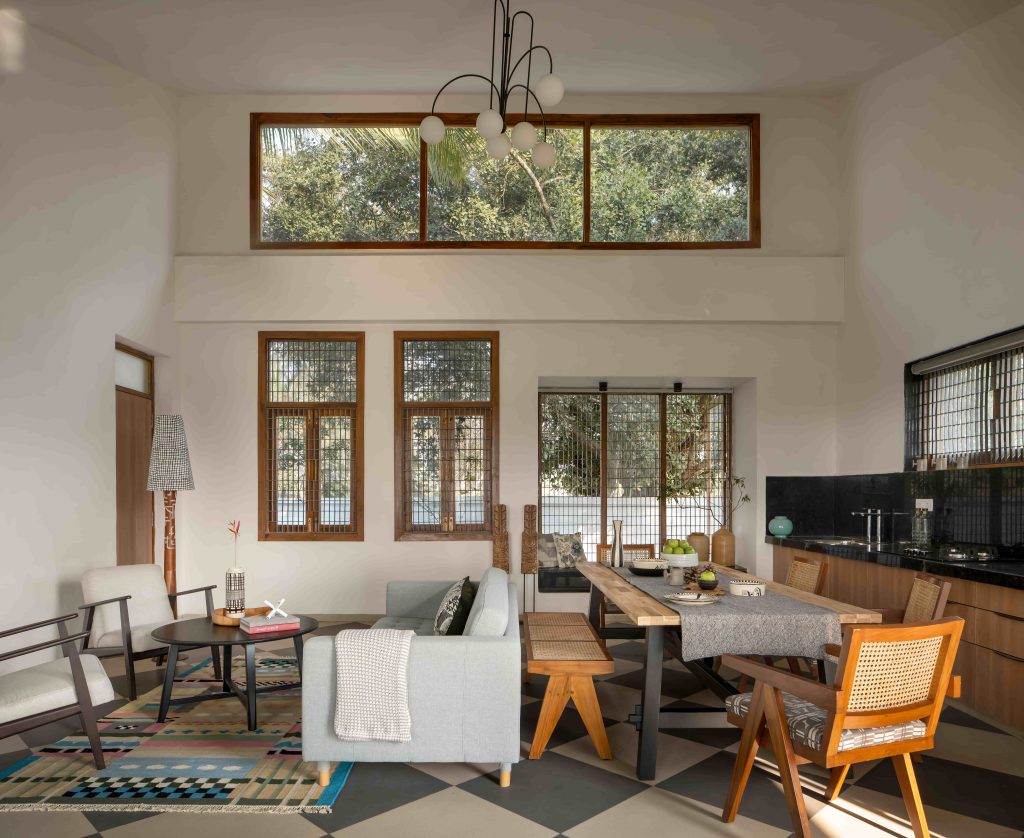
A Breezeway To Serenity
Set apart from the bustle of the public block, the second wing unfolds, imbuing a sense of seclusion paired with sweeping views of the fields beyond. The designers share, “Organising communal functions under one roof, the first block connects to the second block through a breezeway that can be viewed as the home’s lung.” Corralled by a tessellation of mullioned screens, the breezeway is drenched in honeydew warmth, working with, and not against, the surrounding environment.

The bedrooms within the second block are draped in an austere palette of wood and wicker, echoing the communal spaces while infusing the rooms with a warmth that feels deliberate. The two vertically stacked bedrooms spill into an alfresco space, as though reinforcing the home’s stance on embracing the green. They stand as serene vantage points, blurring the boundaries.
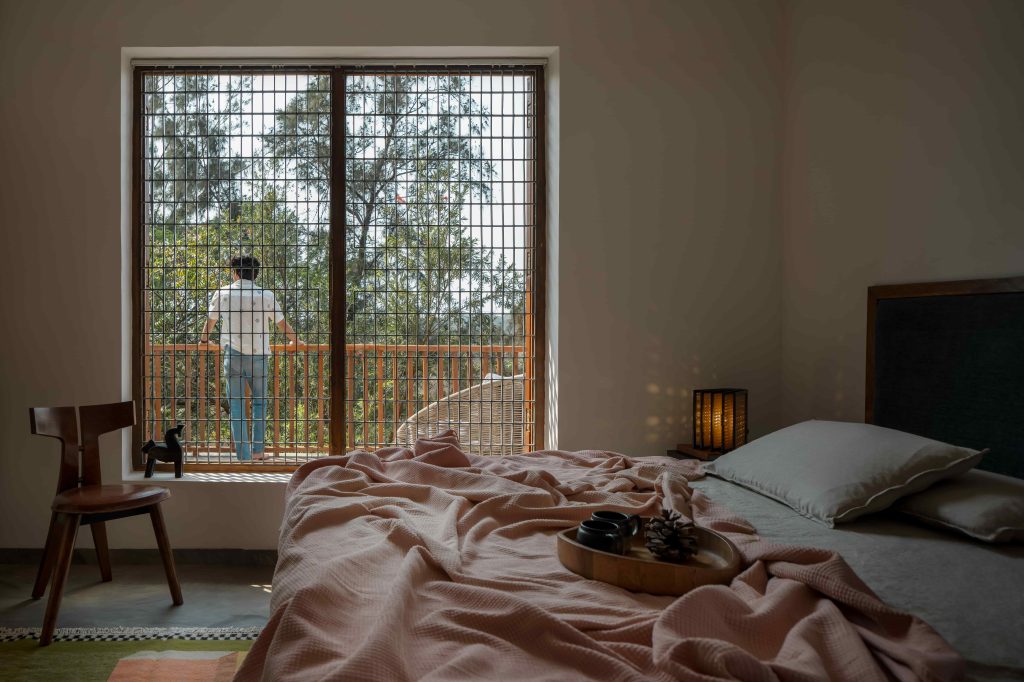
Crowning these blocks are roofs that rise in striking counterpoint to the home’s pristine palette, lending a bold architectural punctuation to its otherwise serene composition. “The roof is cast in RCC, and it has a gentle curve, enough to create a beautiful space where one can simply sit and stare at the birds in the foliage or sleep and stargaze,” muse the designers. They add, “These curving terraces are purpose-built to be walkable: you ascend to a quiet roofscape that offers micro‑decks and elevated platforms for board games under the stars.” The roof stirs a childhood memory of surreptitious ascents to heights, where one could linger unseen.
Also Read: From Heritage Murals To Modern Vaults, 5 Ceiling Design Trends You Can’t-Miss
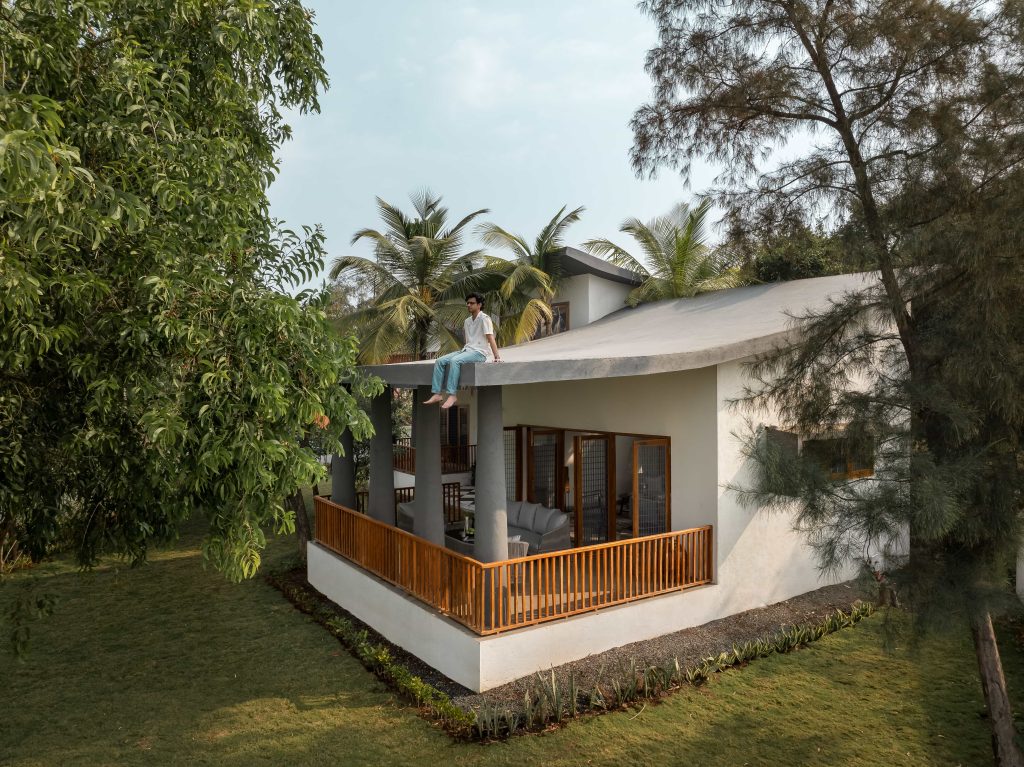
With a palette rooted in minimalism, the home pairs cool cement floors with the warmth of locally sourced timber, while Harlequin tiles add a playful rhythm, and layered textiles gently soften the spaces. “Though minimalist, the design leans on vernacular Gujarat strategies: durable materials with thermal mass, passive cooling via shaded deep openings, and filtered daylight through screens,” explain the designers. Once a cherished home, then left to weather, ‘3 Palm Trees’ has come full circle, restored to evoke the serene charm it once imbued within the bucolic surroundings, while carrying a sense of yearning for the ‘good old days’. This restored home’s true essence lies in its unique character to summon nostalgia, a sentiment as deeply human and intricate as anger or envy, but far more nuanced.

